Finding something to do on New Year’s Day was always going to be a bit tricky because we faced the double whammy of it not only being a holiday but also a Monday – the day of the week when most public museums and institutions are typically closed. It boiled down to a choice between possibly leaving Lisboa and driving up the coast to Nazaré or remaining local and going to the Zoo. (As you’ll learn later, some private museums are open but I had to consider not simply what the adults might find worthwhile but also something my grandnephews would enjoy.)
it is, of course, Nazaré’s beaches – or more accurately the waves to Nazaré’s beaches – that are the city’s main attraction. Here’s a video for those unfamiliar with the reason for Nazare’s fame:.
From late fall through early spring, some of the world’s biggest waves crash along this shore making it, of course, not only a haven for wave watchers but for surfers who want the challenge. Ah, but how does one best get there for a day trip from Lisboa?
Portugal has an adequate intercity train system but the closest stations leave you 10 to 15 kilometers from the Nazaré beaches
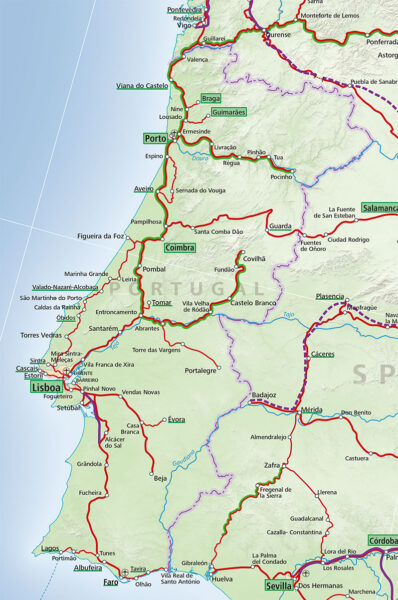
meaning that the most convenient way to reach this seaside town from Lisboa is either by car or bus with the trip requiring a bit more than an hour and a half. However, in order to maximize our chance of seeing some of the big waves, this trip would have required a very early start after a very late night for everyone regardless of which transportation method we chose. Based on my interpretation of the predictive data on the site Nazarewaves the expected maximum height for the waves on 1 January was about 10 meters (33 feet). While big and likely impressive, these are far from the giant waves that Nazaré can produce. We opted to sleep in and remain local which meant a visit to the
Zoo.
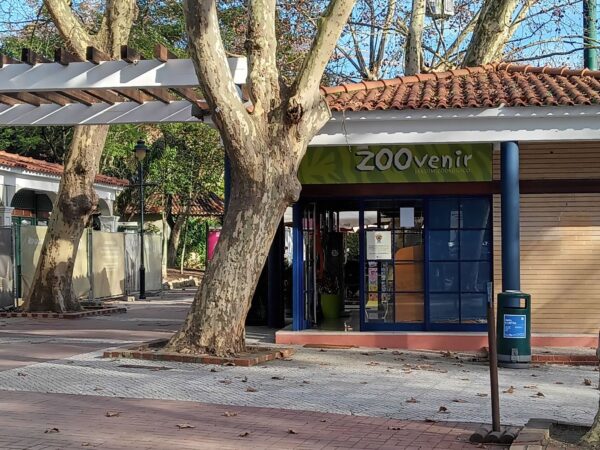 .
.
Well, not the Zoovenir shop but certainly to the Jardim Zoológico de Lisboa. Fortunately, since there’s a Blue Line Metro stop at the zoo, it’s easily reachable in about 15 minutes from our neighborhood leaving from either the Baixa-Chiado or the Rossio Metro stations.
Pulling no punches, I’d have to say that in the context of great zoological parks around the world, Lisbon’s zoo is rather ordinary. Although larger than the famous San Diego Zoo, it’s a modest 64.25 hectares. For comparison, New York’s Bronx Zoo is 107 hectares. It’s more than a century younger than Vienna’s Schönbrunn Zoo which is Europe’s oldest. The Berlin Zoological Garden has more than four times the slightly more than 330 species you’ll find in Lisboa. However, the zoo is in the European Endangered Species Program whose mission focuses on breeding and reintroducing species into their natural habitats.
There is one element that makes a visit to this zoo unique: its cable car. It’s an open air ride that’s designed to make a complete 20-minute circuit of the park unlike San Diego’s Skyfari that mostly moves visitors from one side of the zoo to the other. You can see the full ride in the video below and the very few (uninspiring) pictures I took at this link.
Live, laugh, love or make the most of your music.
Our visit to the Zoo happened Monday and for me, Tuesday (a day trip to Sintra) and Wednesday (a wander through Chiado, a visit to the viewing platform of the Elevador Santa Justa, and a ride on the 28 Tram) were old hat. Thursday was a different story.
In helping my sister plan this trip for her grandsons, she wanted to provide them an opportunity to see someplace in Portugal outside of Lisboa. For practical and financial reasons she wanted to keep the excursion to a single night and I suggested a trip north to Porto or south to the Algarve to try and see the famous Benagil Caves. She chose the latter with the full understanding that the weather in this season could force a cancelation or make the boat ride miserable. We also chose to travel by train thinking that the boys might both enjoy the experience and the chance to see the countryside.
We got an early start and rode the Metro to Oriente Station
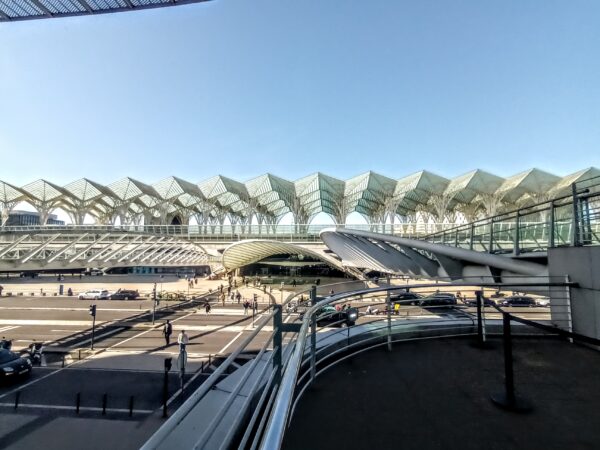
for our scheduled 10:oo departure. There was a mixture of good and bad fortune in our early arrival. The bad fortune came from learning that there was a train strike that day and that our train was among those effected. The good fortune came from the helpful ticket agent who not only rescheduled us for a 14:10 departure but also managed to get us five seats together.
We faced a decision regarding how to pass the now more than four hour gap until our newly scheduled departure. My brother-in-law insisted that we remain in the area rather than returning to our flats in the city center so we began by crossing the street to the large Vasco da Gama shopping mall where we each had a beverage and tried to turn the delay into a positive experience.
Bordalo II’s lynx and telecabines.
The area where you’ll find the Oriente Station and Vasco da Gama Mall is called Parqe de Nações or Park of the Nations. At one time, it had been a decaying shipping port and industrial park. That all changed in 1998 when Lisboa opened Expo ’98. The event covered 50 hectares along the Tagus River in a five kilometer wide strip of land.
The project was built from scratch and every building was pre-sold to be repurposed after the exposition closed. More than 140 countries were represented during the 132 day long expo thereby generating the area’s eponym. In addition to the transportation hub and mall, the area is flush with residences and businesses and attracts visitors to Lisbon’s Oceanarium (to which we’ll return later) and Science Center.
Another remainder from the Expo is the Telecabine de Lisboa that opened in March 1998. The installation consists of 40 closed cars that hold up to eight passengers each and transports them over a 1,200 meter course along the river that reaches a maximum height of 30 meters. The round trip ride takes 16-20 minutes and provides panoramic views of the entire area including the Oceanarium (where we boarded),
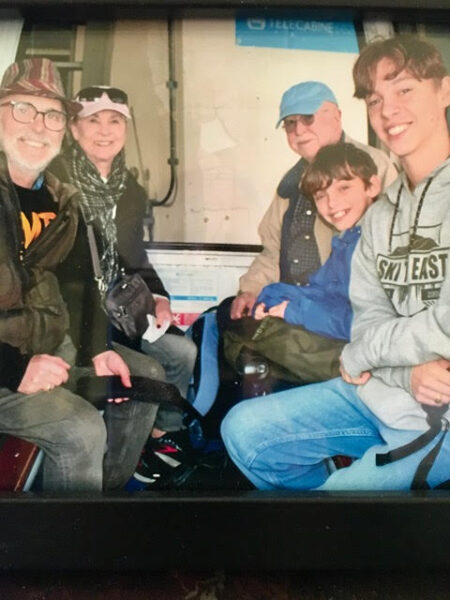
the Portugal Pavilion, the towers of Saint Gabriel and Saint Raphael, the Atlantic Pavilion (now the Meo Arena), the Vasco da Gama Tower (Myriad Hotel), and the Vasco da Gama Bridge – at one time the longest bridge in Europe.
It’s just about a kilometer to walk directly from the mall to the boarding point of the cable car ride. However, on our way we took the very slight detour to get a closeup look at the Iberian Lynx created by the street artist who calls himself Bordalo II. Since he was born in 1987, this work wasn’t part of the original exposition. The Iberian lynx is an endangered species though it has recovered from its low point of 94 individuals in 2001 to a bit more than 1650 today.
Bordalo II built his cat in 2019 by recycling and repurposing waste material (as he does with all his work portraying endangered species). He said in an interview, “I belong to a generation that is extremely consumerist, materialist and greedy. With the production of things at its highest, the production of “waste” and unused objects is also at its highest. “Waste” is quoted because of its abstract definition: “one man’s rubbish is another man’s treasure”. I create, recreate, assemble and develop ideas with end-of-life material and try to relate it to sustainability, ecological and social awareness.” If you’ve been reading along, you’ve seen the cat before but it’s always worth another look.
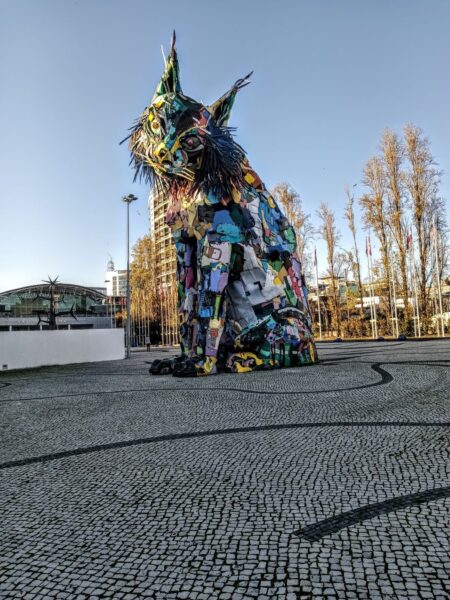
After lunch, we’ll board the train for Portimão and a boat ride through Benagil. But that’s a story for the next post.